Art
About Andrew Cusack
 Writer, web designer, etc.; born in New York; educated in Argentina, Scotland, and South Africa; now based in London.
Writer, web designer, etc.; born in New York; educated in Argentina, Scotland, and South Africa; now based in London. read more
News
Blogs
Reviews & Periodicals
Arts & Design
World
France
Mitteleuropa
Knickerbockers
Argentina
The Levant
Africa
Cape of Good Hope
Netherlands
Scandinavia
Québec
India
Muscovy
Germany
Academica
Peter Stuyvesant’s Legion
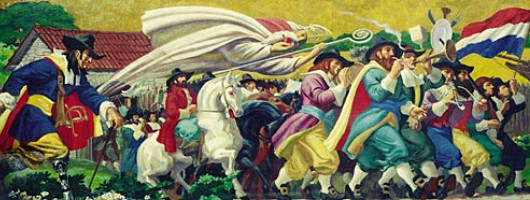
Oil on canvas, 30 in. x 80 in.
1953, Jacob Ruppert Brewery
An Aside: I was taught Latin beside the beautiful carved marble fireplace in the artist’s dining room. Winter lived next door to the school, which purchased the house after his death and used it for class rooms. In our more neglectful hours which investigated the basement, in which were still secreted some of the artist’s sketches for larger murals and models for a bas-relief.
Lewis of the Porcellian
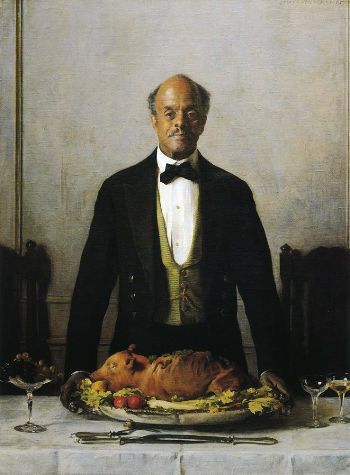
Oil on canvas, 54 in. x 40 in.
1919, the Porcellian Club
The Porcellian Club at Harvard University was founded in 1791 and McKean Gate, the entrance to Harvard Yard opposite the club’s quarters on Massachusetts Avenue in Cambridge, features a boar’s head in tribute. Digby Baltzell ranked the Porc (as it is colloquially known) as the most exclusive of Harvard’s “final clubs”, and Porcellian is known for having correctly turned its nose to Harvard seniors who later turned out to be no good: Joseph Kennedy was blackballed and Franklin D. Roosevelt described his failure to be elected to Porcellian as “the greatest disappointment of my life”.
The Bad Shepherd
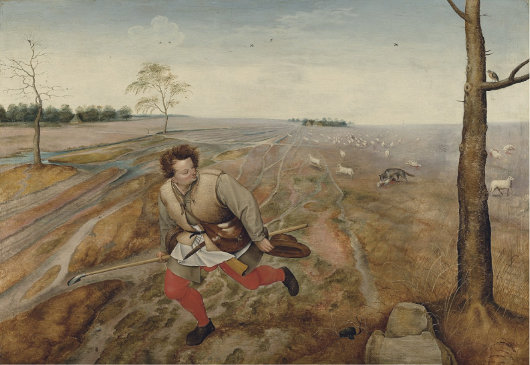
Pieter Brueghel II, The Bad Shepherd
Oil on panel, 29 in. x 41¼ in.
c. 1616, Private collection
With an original estimate of £1,000,000–£1,500,000, Pieter Brueghel the Younger’s The Bad Shepherd sold at a final hammer price of £2,505,250 at Christie’s in London this July. As the house lot notes state, it is “one of the most original and visually arresting of all images within the Brueghelian corpus of paintings”.
I am the good shepherd. The good shepherd lays down his life for the sheep. He who is a hireling and not a shepherd, whose own the sheep are not, sees the wolf coming and leaves the sheep and flees; and the wolf snatches them and scatters them. He flees because he is a hireling and cares nothing for the sheep.
It is significant that the distant horizon behind the sheep is broken only by a solitary church spire and a small farmstead. They seem to suggest that in abandoning his responsiblities the shepherd also rejects both the church and the community as he rushes headlong in the opposite direction. The mental anguish experienced by the shepherd is mirrored in a remarkable way by the barren landscape, shown from a dizzying bird’s eye perspective, stretching back into infinity. Interwoven only by vein-like tracks and ditches that lead the eye into the distance, the landscape is one of the artist’s most extraordinary achievements and very much a precursor to the psychological landscapes of the 20th century.
There is something arrestingly modern about this painting that fascinates me.
Subway riders, New York City, 1914
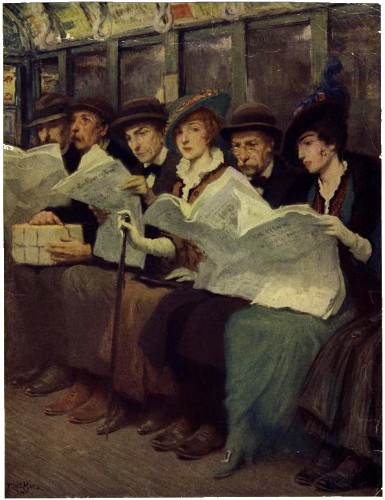
Francis Luis Mora, Subway riders, New York City, 1914
Print, 12½” x 9¼”
1914, New York Public Library
A Tribute to Cockerell
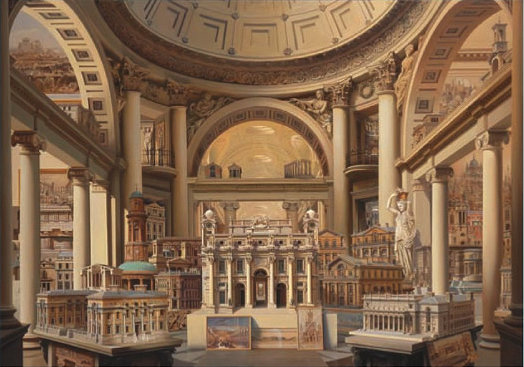
Carl Laubin, A Tribute to Charles Robert Cockerell, RA
Oil on canvas, 39′ 11″ x 60′
2005, Private collection
Ave Maria, Plena Gratia!
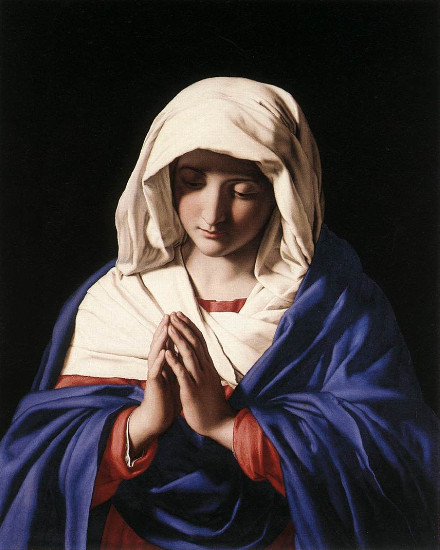
In thanksgiving for many petitions granted.
St Andrews in London
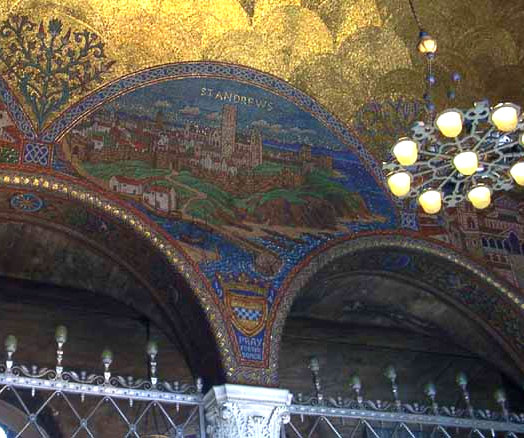
A LITTLE SOMETHING for our good friends from university who’ve just moved to London from the countryside. I hope that when they are in the Cathedral they will pop into our patron’s chapel, glance at the mosaic of our dear old Royal Burgh of St Andrews, remember good times, and say a prayer for us all.
Christopher Street, Greenwich Village
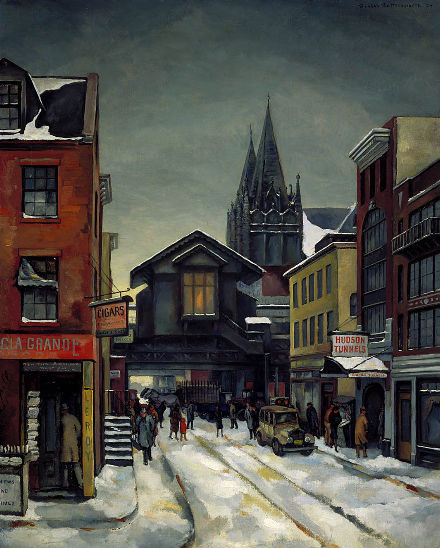
Beulah R. Bettersworth, Christopher Street, Greenwich Village
Oil on canvas, 30 1/8″ x 24 ¼”
1934, Smithsonian American Art Museum
Grand Central Station at Night
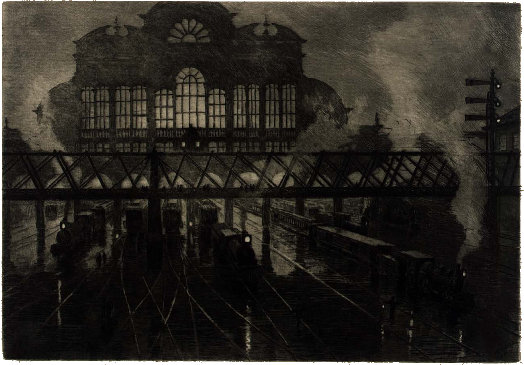
Charles Frederick William Mielatz, Grand Central Station at Night
Etching on paper, 7″ x 10″
1890, Smithsonian American Art Museum
This, of course, is not the Grand Central we know today, but its immediate predecessor.
The Rapalje Children
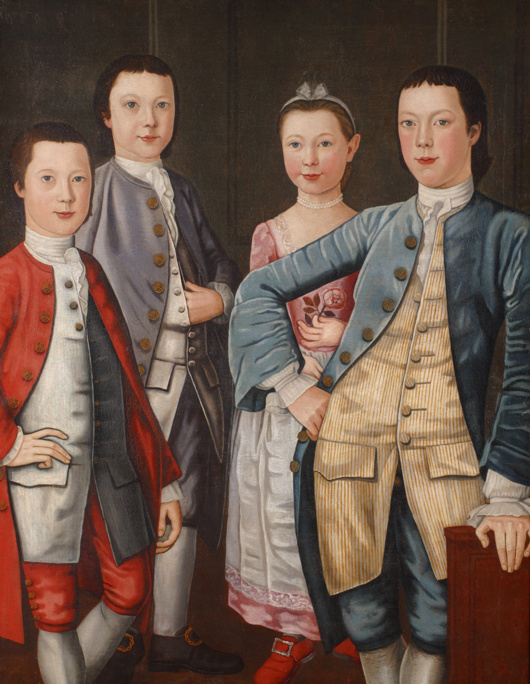
Oil on canvas, 50¾″ x 40″
1768, New-York Historical Society
Durand’s painting of the four children of this prominent mercantile family of Manhattan is one of the finest examples of group portraiture from the colonial period in America. From left to right are Garret (b. 1757), George (b. 1759), Anne (b. 1762), and Jacques (b. 1752).
The painter had come to New York from Virginia two years previous to paint individual portraits of the children of the Beekman family. Art historians suspect he was born or trained in France. Durand later returned to Virginia, where he continued to paint until his death in 1805.
Ludlow Street
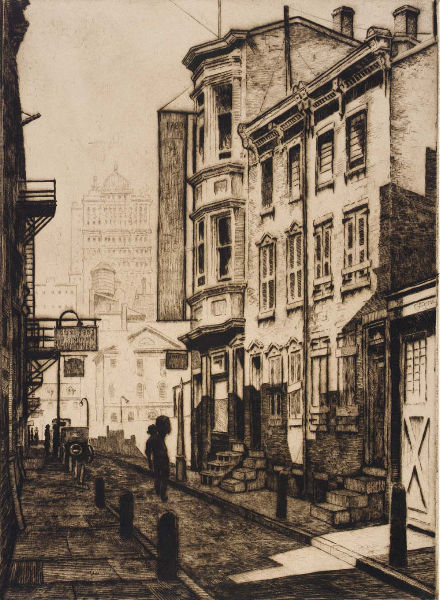
George A. Bradshaw, Ludlow Street
Drypoint on paper, 8 7/8 ” x 6 3/8 ”
1935, Smithsonian American Art Museum
Ludlow Street is the home of the world-famous Katz’s Delicatessen.
New Netherland Medal
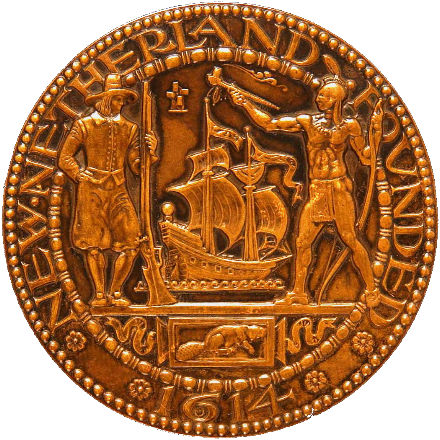
Paul Manship, New York Tercentenary Medal
Bronze, 2 3/4 inch diameter
1914, Smithsonian American Art Museum
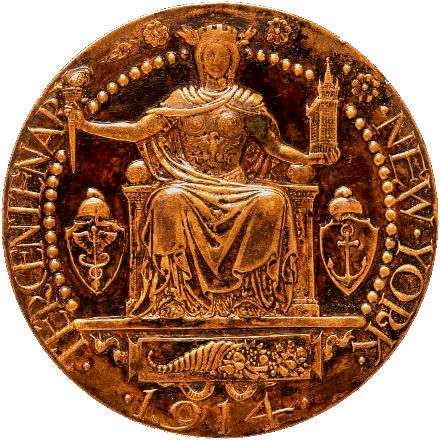
For Saint George
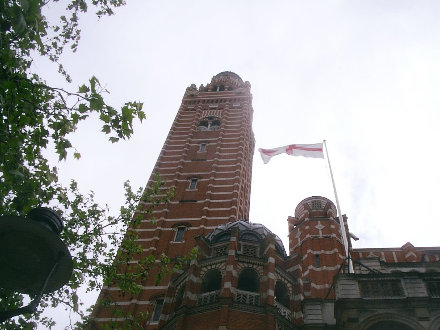
THE CROSS OF SAINT GEORGE snaps proudly from the flagpole above Westminster Cathedral, the Administrator of which, Msgr. Mark Langham, has given us a special St. George’s Day treat by revealing the newly-commissioned designs for completing the mosaic work in that cathedral’s chapel dedicated to the patron saint of England.
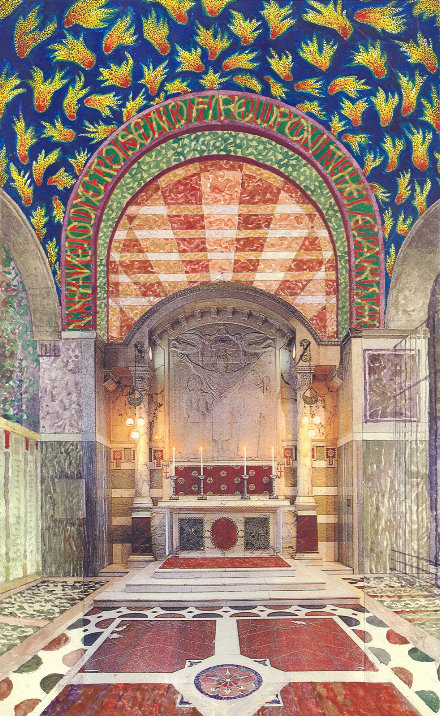
Lord Glenavy

Sir James Henry Mussen Campbell, Bt., 1st Baron Glenavy, PC, QC. was born in Dublin in 1851. Campbell graduated from the University of Dublin (Trinity College) a Bachelor of the Arts in 1874. He was called to the Irish bar in 1878, being made a Queen’s Counsel in 1892.
Campbell was elected to Parliament in 1898, being called to the English bar a year later. He was made Solicitor General for Ireland in 1903, as well as being appointed an Irish Privy Counsellor. He rose to become Lord Chief Justice of Ireland in 1916, being made a baronet the following year, and Lord Chancellor of Ireland the year after that (1918). Sir James was ennobled as 1st Baron Glenavy upon relinquishing office in 1921.
Ireland was partitioned in the following year, and Lord Glenavy became the first Cathaoirleach of Seanad Éireann (Presiding officer of the Irish senate). In 1923, he chaired the judicial committee investigating the establishment of a new courts system for the Irish Free State. His proposals were implemented the following year in the Courts of Justice Act 1924, forming the Irish courts as they remain today.
Having served one six-year term in the Seanad, he did not seek re-election in 1928, and died three years later in 1931. Holding the largely honorary position of President of the College Historical Society (“the Hist”), Dublin University’s debating society, from 1925, he was succeeded upon his death by his fellow Irish Protestant, Douglas Hyde, who himself later became the first President of Ireland from 1938 until 1945.
Un Écossais en France
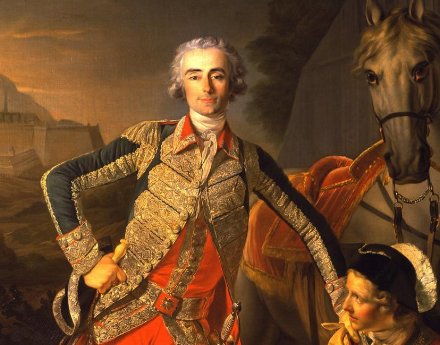
CHARLES GRANT, VICOMTE DE VAUX, was a Frenchman of Caledonian extraction who served as a sous-lieutenant in the Scots Company of the Garde du Roi, eventually rising to the rank of Lieutenant Colonel. A cadet branch of the Scottish clan, the Grants in France made sure to maintain links with their kinsmen in the old country. Abbé Peter Grant helped Sir James Grant, 8th Bt., commence an art collection while Sir James was on the Grand Tour in 1759-60. Abbé Grant’s nephew, Baron Grant de Blairfindy, was a fellow Catholic and Colonel in the Légion Royale of Louis XVI.
In a letter to Sir James, who was Chief of the Grants, Blairfindy described their fellow kinsman the Vicomte de Vaux as “a clever, brave officer, polite in company… as brave as his sword,” though, rather disappointingly, the Baron adds that the Vicomte “never drinks”. De Vaux himself took a keen interest in his extended family, and when the terrors of the French Revolution forced him into exile in London, he published there his Mémoires de la Maison Grant depicting the history of the clan. (more…)
King Jagiello of Poland
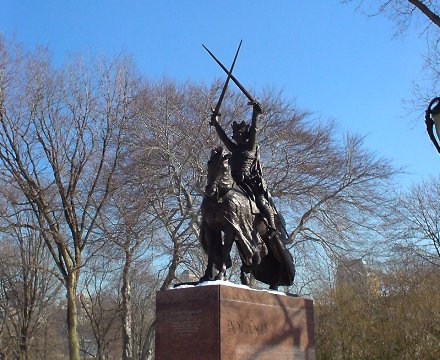
My favorite statue in Central Park is that of King Władysław II Jagiełło of Poland, by the Turtle Pond. (more…)
Christmas
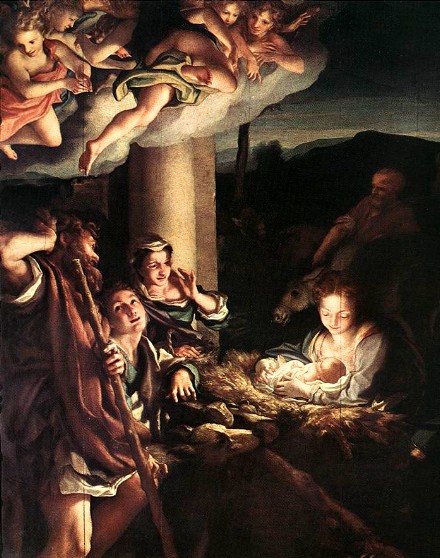
Corregio, Nativity
Oil on canvas, 101″ x 74″
1528-30, Gemäldegalerie, Dresden
Who with His life, the world to save,
All honor, power, glory, Thine,
and in Thy Heart our souls do bind.
a very merry and blessed Christmas.
An Evening at the Old Whitney
TO THE OLD Whitney Museum down on 8th Street, now home to the New York Studio School, which held a panel discussion to mark the twenty-fifth anniversary of the New Criterion. An interesting chat between Hilton Kramer, who left the New York Times to found the magazine in 1982, Karen Wilkin, one of our regular art critics, and James Panero, managing editor and art critic, all moderated by Michael J. Lewis of Williams College. The panel discussion covered myriad subjects related to art, from art criticism to the impossibility of an avant-garde in today’s culture of anything-goes to whether the New Criterion‘s ‘view’ of art can be considered part of any particular school of thought. Hilton had some particularly choice moments.
The building is a particularly nebulous one with many strange nooks and crannies, which can perhaps be explained by the fact that it is actually four townhouses gradually combined over a period of time. The Whitney Museum of American Art, of course, was founded in the 1930s by Gertrude Vanderbilt Whitney and was housed in these merged townhouses until moving to the specially-designed home at Madison and 75th in 1966 — widely agreed to be the ugliest building on the entire Upper East Side.
Among the nooks and crannies previously mentioned, Gertrude Vanderbilt Whitney’s former studio in the old mews building provided an excellent location for the dinner held afterwards, to which the participants, organizers, and a number of hangers-on (including yours truly) were invited. I sat between Gabbe, the New Criterion‘s former Editorial Assistant now working for the Studio School, and Joseph, an art student from outside Canterbury in Kent whose grandmother and grandfather both taught at the Studio School. Joseph and I discussed the beauty of the Somerset countryside, and I confessed I’d buy a cottage and move there in a second were it possible. The inimitable David Yezzi sat across the table and guided much of the conversation on our leg of the three tables, which had been arranged in a U-formation. A little later, I chatted with the artist seated to Gabbe’s left, who had been born in Latvia, with childhood spent in Baghdad, Italy, and England, before settling down in New York at the age of seven. We discussed the glories of Eastern Europe and the linguistic intricacies thereof. During dessert, however, I got on to architecture with the amiable Michael J. Lewis. I sung the praises of Audubon Terrace, one of my favorite spaces in all New York, which he (a Philadelphian) had only stumbled upon for the first time a month ago, and also of the nearby sculpted tomb of Bertram Grosvenor Goodhue, the greatest of all American architects.
Time waits for no man, however, and I managed to catch a late train back home from Grand Central. Alighting at Bronxville, I walked through the misty streets where the spherical streetlamps cast an eerie glow against the limestone façades of the shops. Home before midnight, and time for rest. Tommorrow, aside from being the feast of Saint Andrew, is Stefan Beck’s last day at the New Criterion. Needless to say, commemorative festivities are in order, and an alcoholic concoction known as ‘batch’ is to be brewed. It will not, I imagine, be for the faint of heart.
Elsewhere, the Austrian navy is no more.
The Neue Galerie

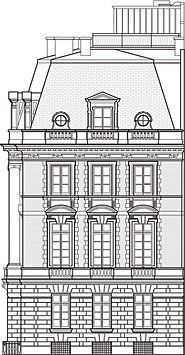 THE RECENT PURCHASE for the Neue Galerie of Gustav Klimt’s 1907 ‘Adele Bloch-Bauer I’ (above), alledgedly for a record-breaking price of $135,000,000, gives me the perfect opportunity to write a post on the eponymously recent addition to New York’s coterie of art museums. Since its 2001 opening, the Neue Galerie has resided in the handsome 1914 beaux-arts mansion on the corner of Fifth Avenue and 86th Street, designed by Carrère and Hastings (of New York Public Library fame) for industrialist William Starr Miller and later inhabited by Mrs. Cornelius Vanderbilt III. In the time since the construction of No. 1048, the rest of Fifth Avenue has undergone a lamentable transformation from a boulevard of beautiful townhouses and mansions to an avenue predominantly consisting of apartment buildings. While one appreciates the inoffensive design of the pre-war buildings on Fifth, there remain a number of thoroughly opprobrious modern interlopers which offend the graceful avenue. One can’t help but pine for Fifth Avenue before the mansions came down, but we can at least give thanks for holdouts like the Neue Galerie. (more…)
THE RECENT PURCHASE for the Neue Galerie of Gustav Klimt’s 1907 ‘Adele Bloch-Bauer I’ (above), alledgedly for a record-breaking price of $135,000,000, gives me the perfect opportunity to write a post on the eponymously recent addition to New York’s coterie of art museums. Since its 2001 opening, the Neue Galerie has resided in the handsome 1914 beaux-arts mansion on the corner of Fifth Avenue and 86th Street, designed by Carrère and Hastings (of New York Public Library fame) for industrialist William Starr Miller and later inhabited by Mrs. Cornelius Vanderbilt III. In the time since the construction of No. 1048, the rest of Fifth Avenue has undergone a lamentable transformation from a boulevard of beautiful townhouses and mansions to an avenue predominantly consisting of apartment buildings. While one appreciates the inoffensive design of the pre-war buildings on Fifth, there remain a number of thoroughly opprobrious modern interlopers which offend the graceful avenue. One can’t help but pine for Fifth Avenue before the mansions came down, but we can at least give thanks for holdouts like the Neue Galerie. (more…)
The Assumption

Nicolas Poussin, The Assumption of the Virgin
Oil on canvas, 22″ x 16″
1650, Musée du Louvre, Paris
Click here for a closer view.
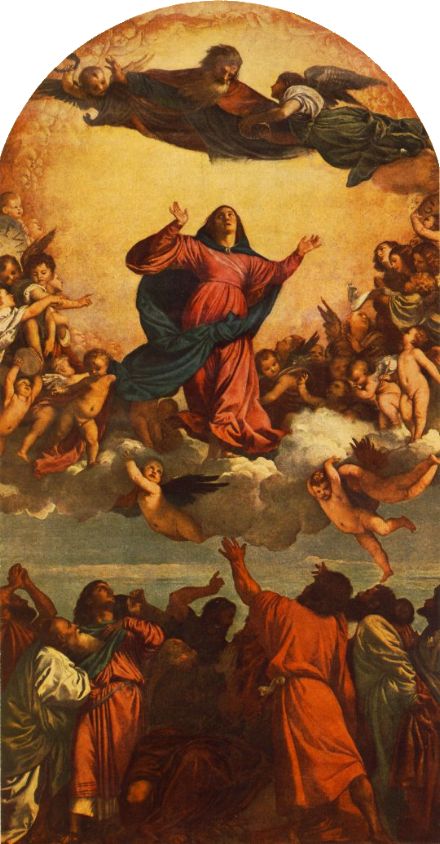
Titian, Assumption of the Virgin
Oil on wood, 272″ x 142″
1516-18, Santa Maria Gloriosa dei Frari, Venice
Search
Instagram: @andcusack
Click here for my Instagram photos.Most Recent Posts
- Faithful Shepherd of the Falklands April 8, 2025
- Articles of Note: 8 April 2025 April 8, 2025
- Proportionality Destroys Representation April 8, 2025
- Sag Harbor Cinema March 26, 2025
- Teutonic Takeover March 10, 2025
Most Recent Comments
Book Wishlist
Monthly Archives
Categories


